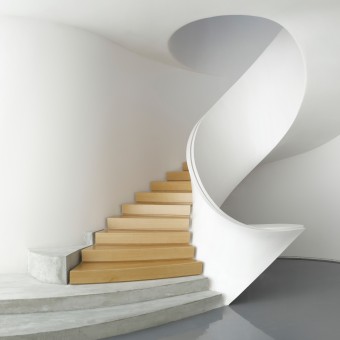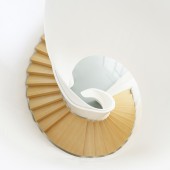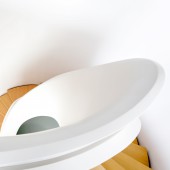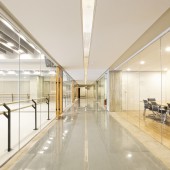
| THE AWARD |
| CATEGORIES |
| REGISTRATION |
| SUBMIT YOUR WORK |
| ENTRY INSTRUCTIONS |
| TERMS & CONDITIONS |
| PUBLICATIONS |
| DATES & FEES |
| METHODOLOGY |
| CONTACT |
| WINNERS |
| PRESS ROOM |
| GET INVOLVED |
| DESIGN PRIZE |
| DESIGN STORE |
| THE AWARD | JURY | CATEGORIES | REGISTRATION | PRESS | WINNERS | PUBLICATIONS | ENTRY INSTRUCTIONS |
Beijing Morning Star Ballet School by OFGA |
Home > Winners > Design #66396 >Interview |
 |
|
FS: What is the main principle, idea and inspiration behind your design?
WY: We wanted to explore the dichotomy between Ballet on stage, and in the studios.
FS: What has been your main focus in designing this work? Especially what did you want to achieve?
WY: My main focus was to communicate the different qualities of ballet through the language of space, light, and textures. I wanted the student to feel the lightness and the grace of a ballerina on stage whilst entering and ascending the sculptural staircase. Then, for the patron to appreciate the physical and mental discipline behind the art form as they walk through halls of unfinished concrete and exposed structural columns.
FS: What are your future plans for this award winning design?
WY: I hope to continue this exploration with future venues of the foundation.
FS: How long did it take you to design this particular concept?
WY: From concept to bidding took about three months. Construction took another seven.
FS: Why did you design this particular concept? Was this design commissioned or did you decide to pursuit an inspiration?
WY: The brief originally called for a commercial shop front in the entrance space. I thought it would be important to give set the foundation apart from more commercially driven schools, and so I pushed for an interpretive piece instead. Something that would set the stage for the foundation.
FS: What made you design this particular type of work?
WY: My parents both come from the world of ballet. I took ballet lessons as a young boy and was always made fun for it by my peers. So when this opportunity came I really wanted to tell a different side of ballet, a side of strength and character.
FS: Where there any other designs and/or designers that helped the influence the design of your work?
WY: No. I had just set up OFGA at the time and worked on this project alone.
FS: Who is the target customer for his design?
WY: A new generation of Chinese ballerinas.
FS: What sets this design apart from other similar or resembling concepts?
WY: It doesn't try to sell the prevailing image of ballet.
FS: How did you come up with the name for this design? What does it mean?
WY: It's the name of the foundation.
FS: Which design tools did you use when you were working on this project?
WY: Pencil and paper at first, followed by Rhino and Revit.
FS: What is the most unique aspect of your design?
WY: The interpretation and execution of the stair balustrade, that is at once ceiling, wall, balustrade, handrail and furniture.
FS: Who did you collaborate with for this design? Did you work with people with technical / specialized skills?
WY: I worked with E-Grow who specializes in glass fiber reinforced concrete panels using re-usable wax molds.
FS: What is the role of technology in this particular design?
WY: It helped rationalize the surface and gave me much finer control of the final outcome up front.
FS: Is your design influenced by data or analytical research in any way? What kind of research did you conduct for making this design?
WY: I researched ballet methods, including classical, modern. Some of the lines in the stair, especially where it engages the ceiling and disappears into the wall surface attempts to echo the hand to eye connection used in Ballet, in particular, Vaganova's methods.
FS: Thank you for providing us with this opportunity to interview you.
A' Design Award and Competitions grants rights to press members and bloggers to use parts of this interview. This interview is provided as it is; DesignPRWire and A' Design Award and Competitions cannot be held responsible for the answers given by participating designers.
| SOCIAL |
| + Add to Likes / Favorites | Send to My Email | Comment | View Press-Release |





